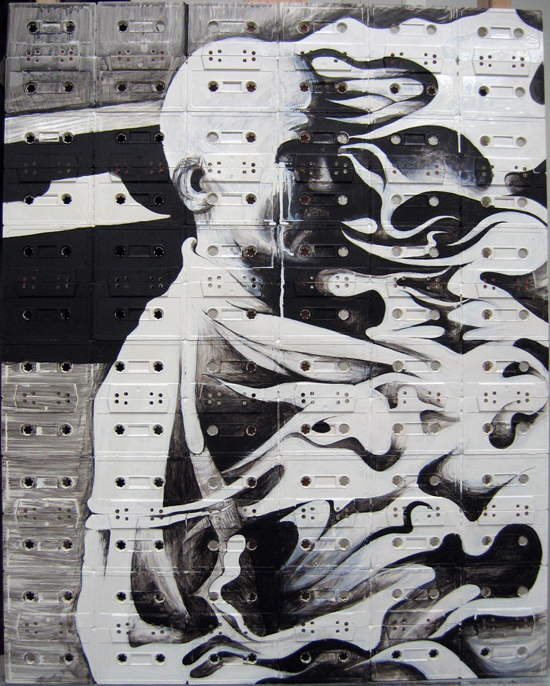The Life of a Mixtape
Precision planning is taking place
birthing wastebaskets full of paper.
Of possibilities. Remember,
it's not only about the songs, but also
their order is just as imperative
to translate feelings through music
during the Eighties. When
the low-grade tape would occasionally rip,
sending static disharmony from the radio
while supplying a plethora of nooses
for the listener to disentangle bit by bit.
The hours of reeling would begin
in earnest as spools were respun,
and no matter the precision of the wasted time,
fixing the discombobulation, the tape
would still be magically mangled
at the best part of every song.

Rage Against the Machine -- Sami Havia
Vocalist Zack de la Rocha, bassist and backing vocalist Tim Commerford, guitarist Tom Morello, and drummer Brad Wilk formed Rage Against the Machine in 1991. In 1992 they released their eponymous album which featured Malcolm Browne's photo of the self-immolation of Thích Quảng Đức, a Vietnamese Buddhist monk, in Saigon (modern Ho Chi Minh)in 1963. He was protesting against Ngô Đình Diệm's oppression of Buddhism, specifically the banning of the Buddhist flag on Vesak, the birthday of Gautama Buddha, just 2 days after Diem had held a public ceremony displaying Christian crosses; earlier in his rule he had dedicated Vietnam to Jesus and the Catholic Church. In Hue protesters had demonstrated against the action, and troops had killed 9 of them. One monk placed a cushion on the road while another took a 5-gallon can of gasoline from the trunk of a car. Duc took the meditative lotus position on the cushion, and the gasoline was pored over his head. Then Duc rotated a string of wooden prayer beads, recited "Nam mô A di đà Phật" (homage to Amitābha Buddha), struck a match, and set himself on fire. During the 10 minutes it took for his body to burn the monk "never moved a muscle, never uttered a sound, his outward composure in sharp contrast to the wailing people around him,” according to journalist David Halberstam. However, his heart remained intact and was put in a flass chalice at Chùa Xá Lợi, the largest pagoda in Ho Chih Minh. "Xa loi" is the Vietnamese term for sarira (Buddhist holy relics which emanate from or incite blessings within the mindstream and experience of those connected to them. Three months later combat police assaulted the pagoda, brutlized the monks and nuns inside, vandalized it, and confiscated Duc's heart. Prior to his suicide he had left a note: “Before closing my eyes and moving towards the vision of the Buddha, I respectfully plead to President Ngo Dinh Diem to take a mind of compassion towards the people of the nation and implement religious equality to maintain the strength of the homeland eternally."
ReplyDelete